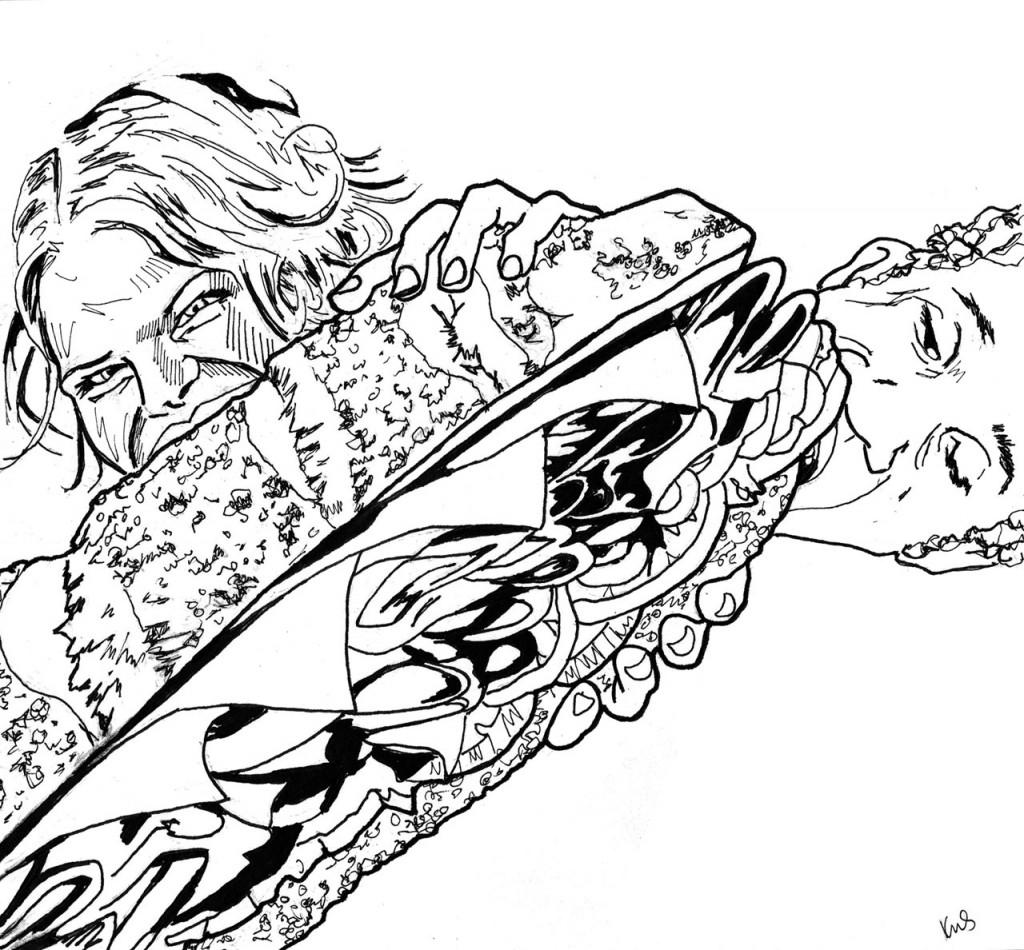By Mario Montalvo/ne news editor
Many students try to find themselves while in college. It’s a part of growing up that can be difficult for many.
NE student Fey McIntyre goes to school, has a job and spends her free time writing and playing games on her computer. She is like any other girl except that she was born a boy.
She is a transgender individual.
McIntyre began exhibiting signs of female behavior at an early age.
“I remember when I was 6 or 7, I used to get paper bags from the grocery store, and I used to cut them up into skirts and outfits and things like that, and I used to tape them up and staple them,” she said.
She’s never thought of herself as different. Who she is seems natural to her, she said.
Despite her long hair and women’s clothing, McIntyre said she still has a hard time getting people to refer to her as she. Even some teachers say he, and it’s frustrating, she said.
There is a lot of confusion and misinformation about sexual orientation and transgender.
Rafael McDonnell of Resource Center Dallas, a lesbian, gay, bisexual and transgender and HIV/AIDS service organization, said, “Sexual orientation is who you love. Gender identity is who you are.”
The Sexuality Information and Education Council of the United States defines a transgender individual as someone “whose internal feelings of being male or female differ from the sexual anatomy they were born with.”
Transgender people can be heterosexual, homosexual or bisexual, the council said.
NE student Pat Faulkner is also transgender.
Unlike McIntyre, who identifies as female, Faulkner identifies as asexual or genderless but still prefers to be called she. Faulkner also knew at a young age that she did not identify with the gender she was born with.
“When I was really young, I did kind of feel a little off or distant from my body,” she said, “but it was something I ended up ignoring and not talking about.”
Both McIntyre and Faulkner are currently taking testosterone blockers and undergoing estrogen treatments to transition to appear more feminine, they said.
Faulkner said her family is generally accepting of her choice and wants her to do what makes her happy. McIntyre’s mother took a while, McIntyre said, but her mother has become more accepting of her decision.
Not all LGBT individuals are accepted by their families, said NE psychology adjunct Karen Fisler, who teaches human sexuality on NE Campus and works with homeless youth at her full-time job.
Many transgender youth become homeless as a result of being rejected by their families, Fisler said.
Homeless LGBT youth are more susceptible to violence because they’re more vulnerable, Fisler said.
Although she has never been homeless, McIntyre said she has experienced some violent attacks because she is transgender.
“I’ve been hit in the head with, I never got to see it, but it was like a chunk of iron,” she said. “I was told by a friend, and I had to get five stitches after that.”
Fisler said fear plays a big part in fueling the violence against the transgender community, and education is the best way to combat it.
“I think regardless of whether it’s a cultural thing, a race thing, a sexuality thing, as long as we can appreciate the person and the fact that they’re dealing with the same things the rest of us deal with — school, work, paying their bills, economy problems, children, relationships — that we’re all basically the same. And if we can understand that about one another, then the fear goes away and we have a little more tolerance,” she said.
Transgender individuals have a number of resources. Resource Center Dallas hosts several social events and meetings throughout the month.
Shawn Trimm is president of Transmigration, a social group for transgender youth ages 17-29. The group meets every Thursday at the Resource Center Dallas.
“We do all kinds of things,” Trimm said. “We have a book club. Sometimes we’ll watch anime movies. Sometimes we’ll watch movie movies. Sometimes we’ll go to the museum. It’s really random what we do, but we all vote on what we want to do.”
Trimm said the main resource the group provides is friendship with other people who understand what they’re going through.
Fisler said everyone has something a little bit different about them that makes them unique and special.
“We’re like a box of jelly beans,” she said. “There’s a whole bunch of colors, and they all have something special about them and if they were all licorice, that wouldn’t be any fun.”




























